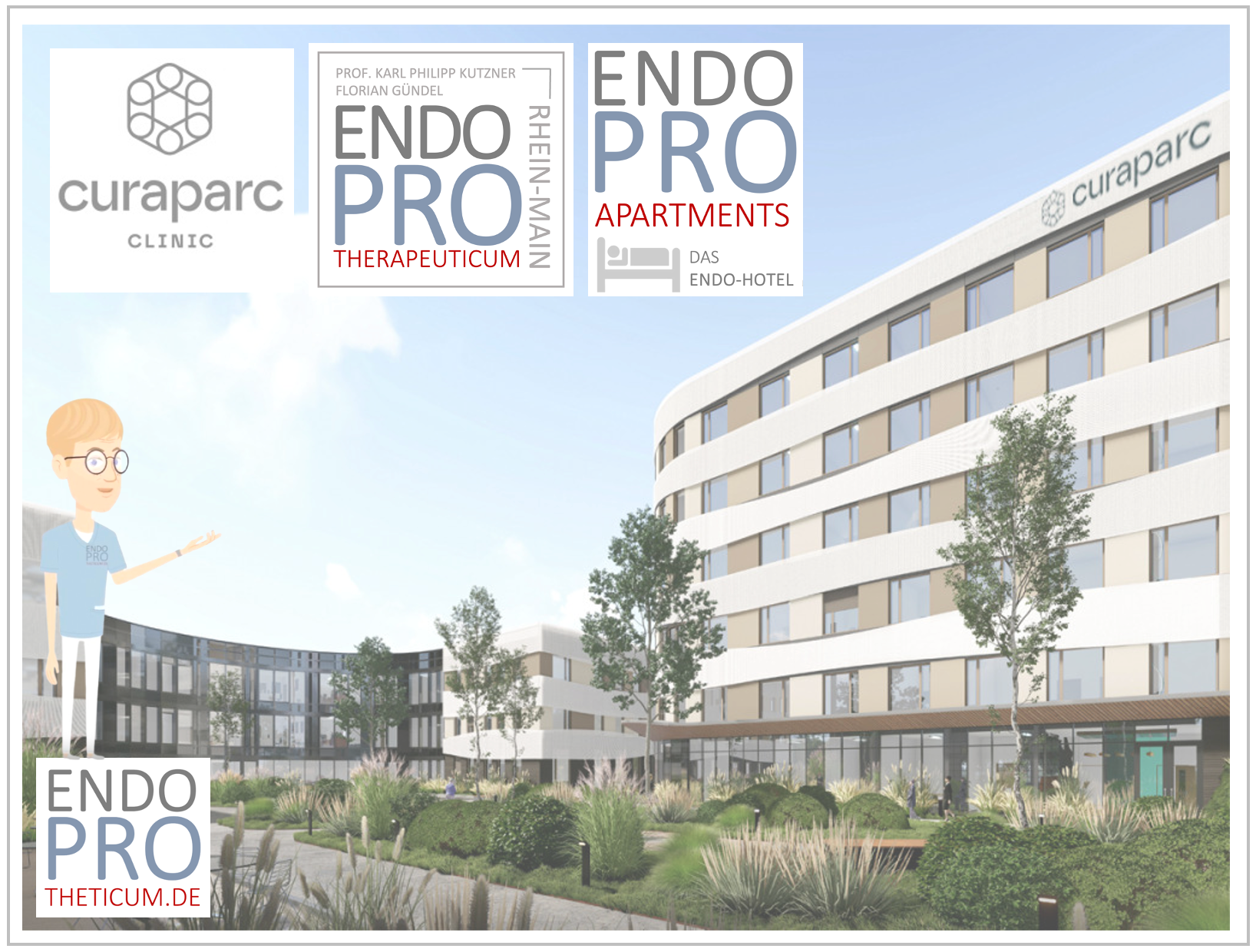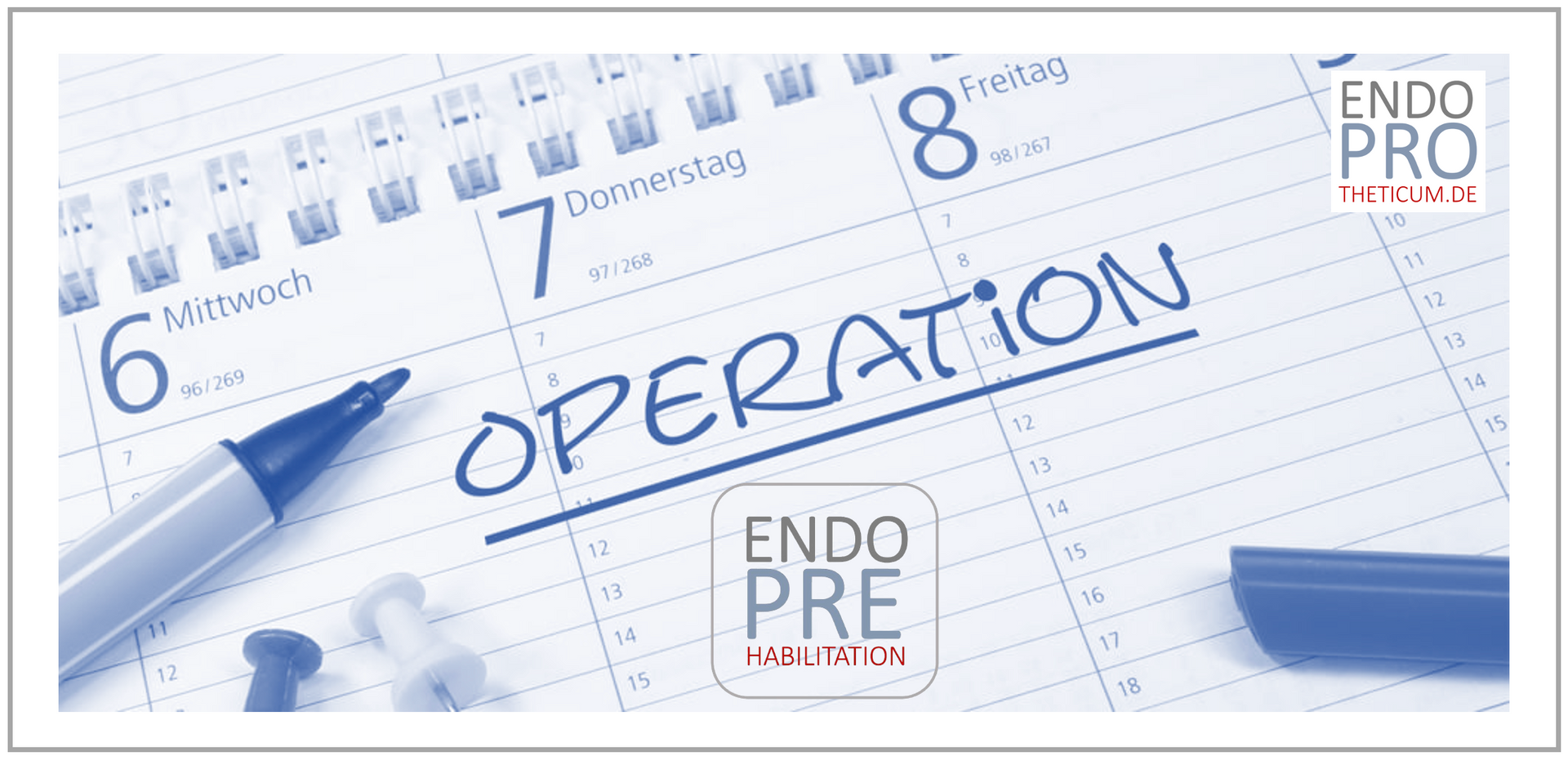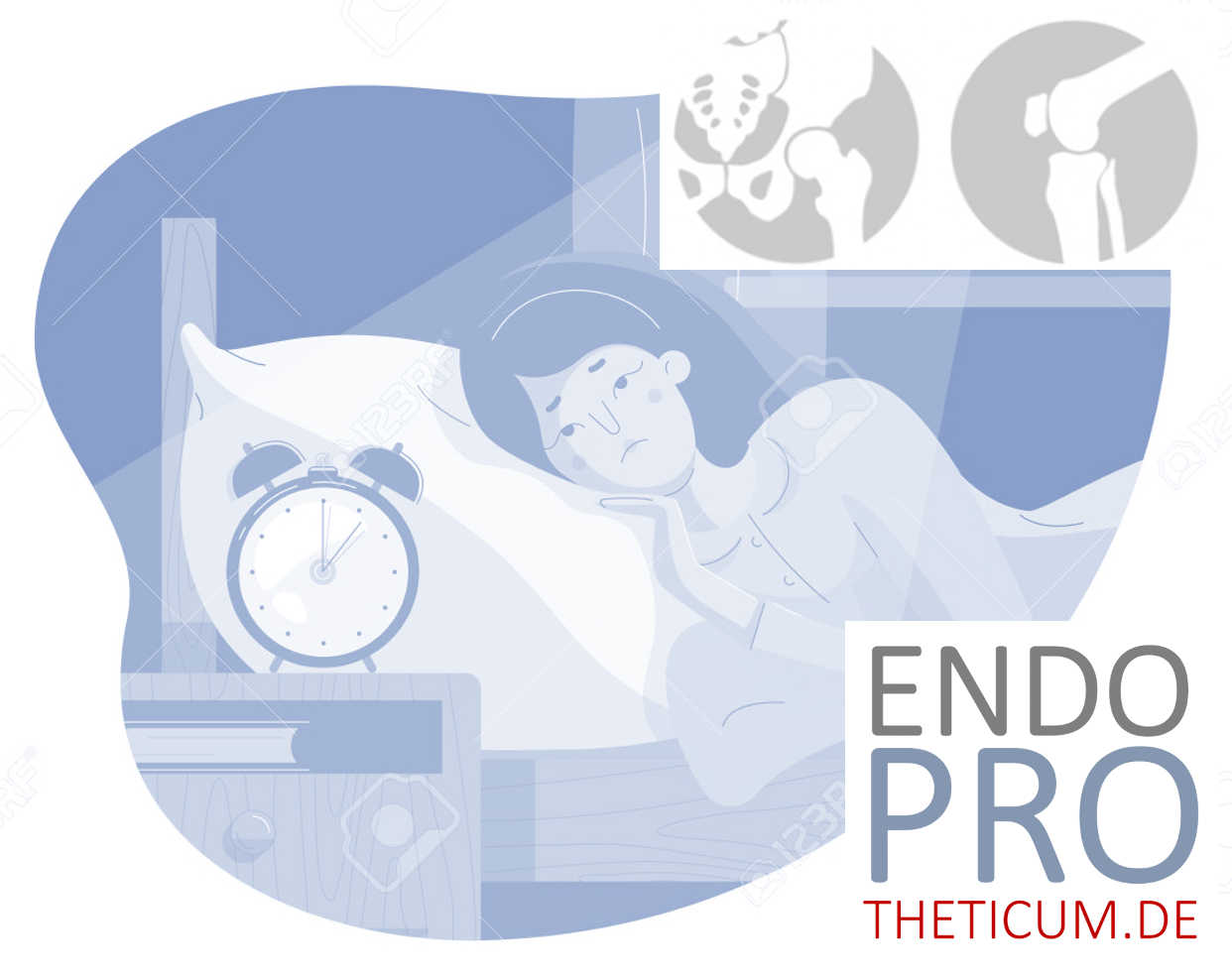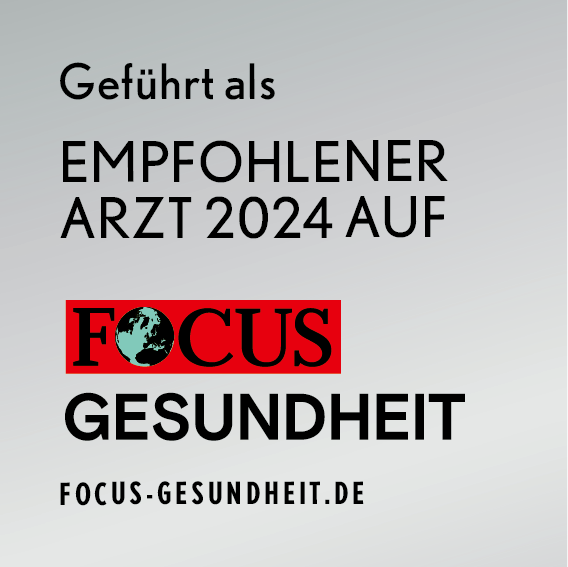Ingrowth of a cementless total hip replacement: primary and secondary stability
Be careful not to overload too quickly after cementless THA!

Cementless total hip arthroplasty (THA) has established itself as one of the most common options for treating advanced hip osteoarthritis and other degenerative hip diseases. Its main advantage is that the prosthetic shaft is not fixed with cement, but grows directly into the bone. This ingrowth occurs in two phases: primary stability and secondary stability. Successful ingrowth and the associated long-term durability of the prosthesis depend on several factors, which we explain in detail in this article.
Primary stability after total hip replacement
Primary stability describes the initial mechanical fixation of the cementless prosthetic socket immediately after surgery. It is achieved by the exact fit of the shaft in the femur and is crucial for the initial anchoring of the prosthesis in the bone.
Factors influencing primary stability:
- Anatomical fit: Modern hip prostheses, especially short-shaft prostheses, are designed to optimally adapt to the individual anatomy of the femur. A precise fit is crucial to prevent movement of the prosthetic socket in the first postoperative weeks.
- Surface coating: The rough, porous surface of the prosthetic shaft promotes bone ingrowth. Titanium and other biocompatible materials are particularly suitable for this because they promote a high level of osseointegration.
- Minimally invasive surgical techniques: These techniques allow less damage to the surrounding soft tissues and muscles, which supports the stability of the prosthesis in the early phase.
Secondary stability after total hip replacement
Secondary stability develops in the weeks and months after surgery as the bone grows into the surface of the prosthesis and permanent, biological anchoring is achieved. This phase is crucial for the long-term durability of the prosthesis.
Factors influencing secondary stability:
- Bone healing: The healing process of bone is individual and can be influenced by various factors, such as age, bone density and general health of the patient. Secondary stability occurs as soon as the bone has grown stably with the prosthesis.
- Surface structure of the prosthesis: The micro-roughness and special coatings, such as calcium phosphate or hydroxyapatite, promote bone growth and support osseointegration.
- Correct postoperative loading: Controlled, moderate loading of the operated leg protects the bone from growing into the prosthesis. However, too much stress in the early phase can impair ingrowth.
Risks of impaired ingrowth
Unsuccessful ingrowth of the cementless prosthesis can have serious consequences, such as loosening, instability or the need for revision. The most common risk factors include:
- Early heavy loading: While it is important to put moderate weight on the operated leg, excessive loading, particularly in the first few weeks, can cause micro-movements between the prosthesis and bone that interfere with ingrowth. This increases the risk of early loosening of the prosthesis.
- Poor bone quality: Patients with osteoporosis or other bone diseases are at increased risk of impaired ingrowth because the bone may not be sufficiently stable to firmly anchor the prosthesis.
- Infections: An infection in the surgical area can disrupt the healing process and hinder bone integration. It can also lead to loosening of the prosthesis, which in severe cases requires revision surgery.
Follow-up treatment and rehabilitation
The correct follow-up treatment is crucial to ensure optimal function of the cementless total hip replacement and to minimize the risk of disturbed ingrowth. Here are some of the key aspects:
- Early mobilization: The patient should stand up and put weight on the leg on the first day after the operation with the help of physiotherapists, but in a controlled manner. Too early or too strong a load can disrupt ingrowth.
- Controlled loading: In the first few weeks, patients should only put as much load on the operated leg as recommended by the surgeon. This usually happens gradually, starting with partial weight-bearing and gradually increasing.
- Regular follow-up examinations: Regular X-ray checks are necessary to monitor the progress of the ingrowth and to detect possible complications at an early stage.
After a cementless total hip arthroplasty (THA), follow-up treatment is crucial to support the successful ingrowth of the prosthesis and avoid long-term complications. In the first six weeks after surgery, the focus should not be on intensive exercises, but rather on promoting bone and wound healing. There are clear recommendations as to which stresses and exercises should be avoided in order to support the healing process.
1. Avoiding one-legged exercises
Exercises that require standing on one leg should be avoided for the first six weeks after surgery. This type of exercise creates uneven loading on the operated leg and can potentially destabilize the primary fixation of the prosthesis.
Reasons for this:
- High load: The single-leg stand places a significant amount of stress on the operated leg because the entire body weight is acting on this leg. In the early phase, however, controlled partial loading is crucial in order not to endanger the bone's ingrowth into the prosthesis.
- Instability: The muscles around the hip joint must first recover after the operation. Exercises while standing on one leg put excessive strain on the muscles that have not yet fully regenerated and could lead to unwanted movements in the hip joint.
Instead, patients should focus on exercises that use both legs at the same time and only partially put weight on the operated leg.
2. Avoid wobbling plates and unstable surfaces
Unstable exercise equipment, such as wobble plates, which are often used in physical therapy to promote balance and stability, should be strictly avoided for the first six weeks. Although these devices can be helpful in the long term, there is a high risk in the initial phase after a total hip replacement that they will lead to uncontrolled movements and disrupt the integration of the prosthesis.
Risks with wobbling plates:
- Micro-movements of the prosthesis: Standing on a wobble plate requires constant small corrective movements of the body, which in turn could cause micro-movements of the prosthesis in the bone. Such movements are particularly critical during the ingrowth phase as they can affect primary stability.
- Delay in osseointegration: Uncontrolled movements and repeated changes in load can delay or even prevent osseointegration (growth of the bone into the prosthesis), which in the worst case leads to loosening of the prosthesis.
3. Avoidance of shock loads
Impact loads such as those that occur during jumping, running, or intense strength training should also be avoided in the early postoperative period. Shock loads put considerable pressure on the newly operated hip joint and can hinder the ingrowth of the prosthesis.
Examples of shock loads:
- Running or jogging: The repetitive impact of running creates shock waves that are transmitted to the hip joint. Such movements are particularly harmful in the first few weeks after the operation as they endanger primary stability.
- Jumping or hopping: Similar stress occurs when jumping, which is why exercises such as light hopping or jumping should not be carried out in this phase.
Instead, attention should be paid to gentle movements and walking exercises with a gradual increase in the load.
4. Maximum strength and stability exercises in the early phase
Maximum strength exercises, i.e. exercises that aim to push the muscles to their limit, are not useful in the first six weeks after hip surgery. This phase is not about restoring strength as quickly as possible, but rather about supporting bone healing and wound healing.
Reasons against maximum strength exercises:
- Increased muscle tension: Maximum strength exercises put the muscles around the hip under great tension, which poses the risk of destabilizing the prosthesis.
- Stress on the denture anchorage: These exercises could put undue stress on the fixation of the denture in the bone and increase the risk of loosening.
Stability exercises are also of minor importance, as the stability of the hip in the first few weeks is primarily achieved through the bony healing of the prosthesis and not through strengthening the surrounding muscles.
5. Respect bone healing and wound healing
The primary goal of the first six weeks after a cementless total hip replacement is not to disrupt the healing process of the bone and soft tissue. Bone healing plays a crucial role in long-term denture ingrowth, and therefore it is important to avoid exercises and activities that could hinder this process.
Healing process of the bone:
- Primary phase of healing: In the first few weeks after the operation, the bone is in an acute healing phase in which new bone substance is formed. Excessive or incorrect stress can interrupt or slow down this process.
- Wound healing: In addition to bone healing, healing of the soft tissue around the hip is also crucial. Exercises or movements that put too much strain on the surgical wound could lead to problems with wound healing.
A regulated, moderate build-up of load, on the other hand, promotes healing and supports the long-term function of the prosthesis.
Recommended exercises in the first six weeks
While intense exercise and impact loading should be avoided in the first few weeks, there are still some useful exercises that can be performed to gradually rebuild mobility and muscle strength without jeopardizing healing.
Recommended types of movement:
- Walking: Gentle walking with the support of walking aids is one of the safest and most effective exercises in the first few weeks after surgery. It promotes blood circulation and supports healing without putting too much strain on the hip.
- Supine leg raises: This exercise can help gently strengthen the muscles without putting undue strain on the hip joint.
- Exercise in water: After consulting with your doctor, light exercise in water can also be useful, as the water supports the body and reduces the strain on the hip joint.
Conclusion
Cementless THA is a proven method of providing patients with hip joint disorders with a long-term solution. The success of the prosthesis depends largely on the primary stability and the subsequent secondary stability. Controlled loading and careful aftercare are crucial to prevent disrupted ingrowth. With the right technique and aftercare, patients can benefit from a long prosthetic lifespan and a high quality of life.
In the first six weeks after a cementless total hip replacement, patients should be careful with weight-bearing and exercises. Single leg stands, wobble plates, impact loads and intensive strength exercises should be avoided as they increase the risk of impaired healing and loosening of the prosthesis. Instead, the focus should be on gentle movements that promote healing and do not endanger the prosthesis. It is crucial to respect the healing process of the bone and soft tissues to ensure long-term stability of the prosthesis.
MAKE AN APPOINTMENT?
You are welcome to make an appointment either by phone or online .



























